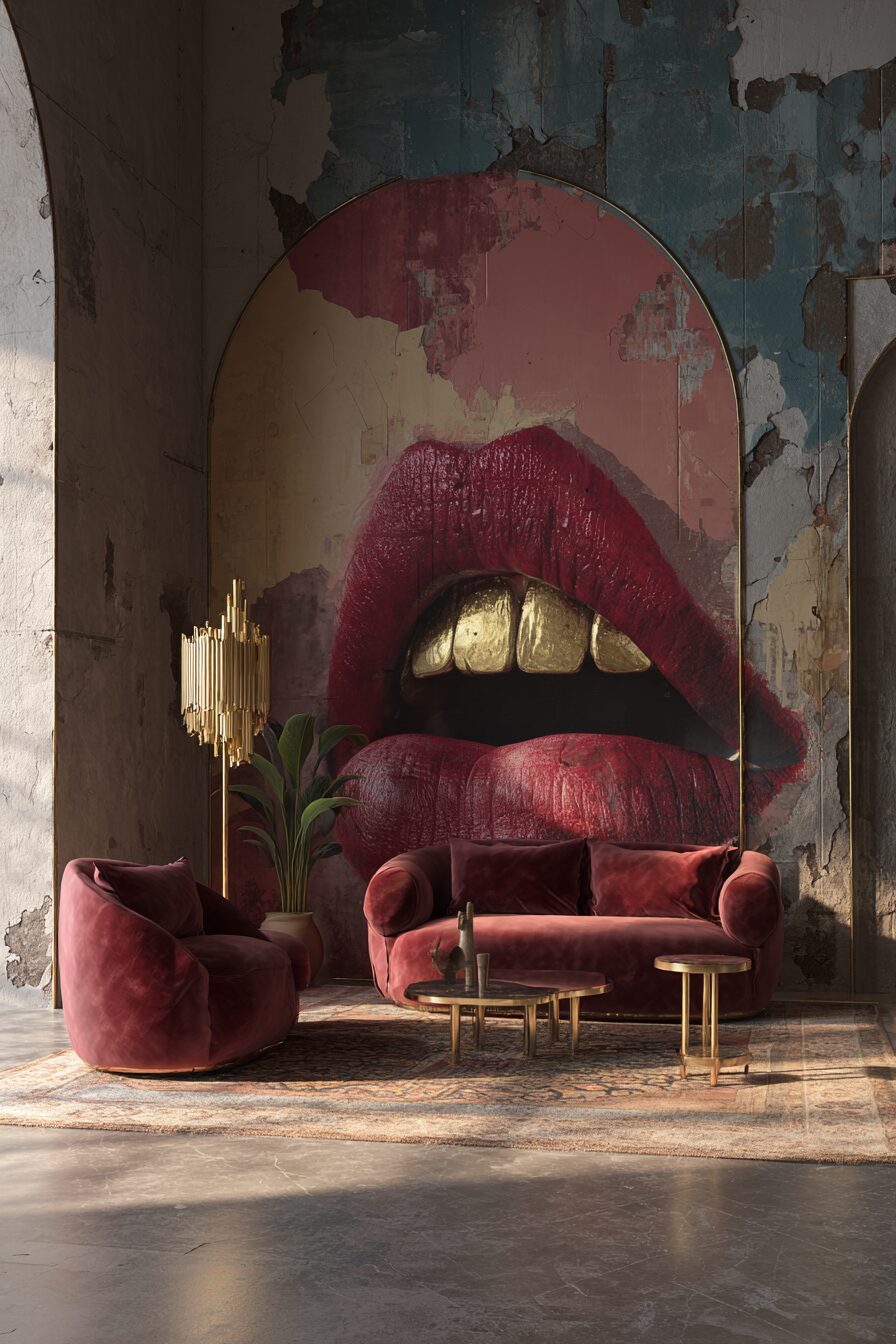In a world of cookie-cutter interiors and predictable design, surrealist decor offers a refreshing escape into the realm of dreams and imagination.
Drawing inspiration from the artistic movement that gave us Salvador Dalí and René Magritte, these unconventional design approaches invite you to break rules, challenge perceptions, and create spaces that are uniquely captivating.
These ideas aren’t just decorative choices – they’re conversation starters that will make your home unforgettable.
Melting Furniture: When Reality Drips

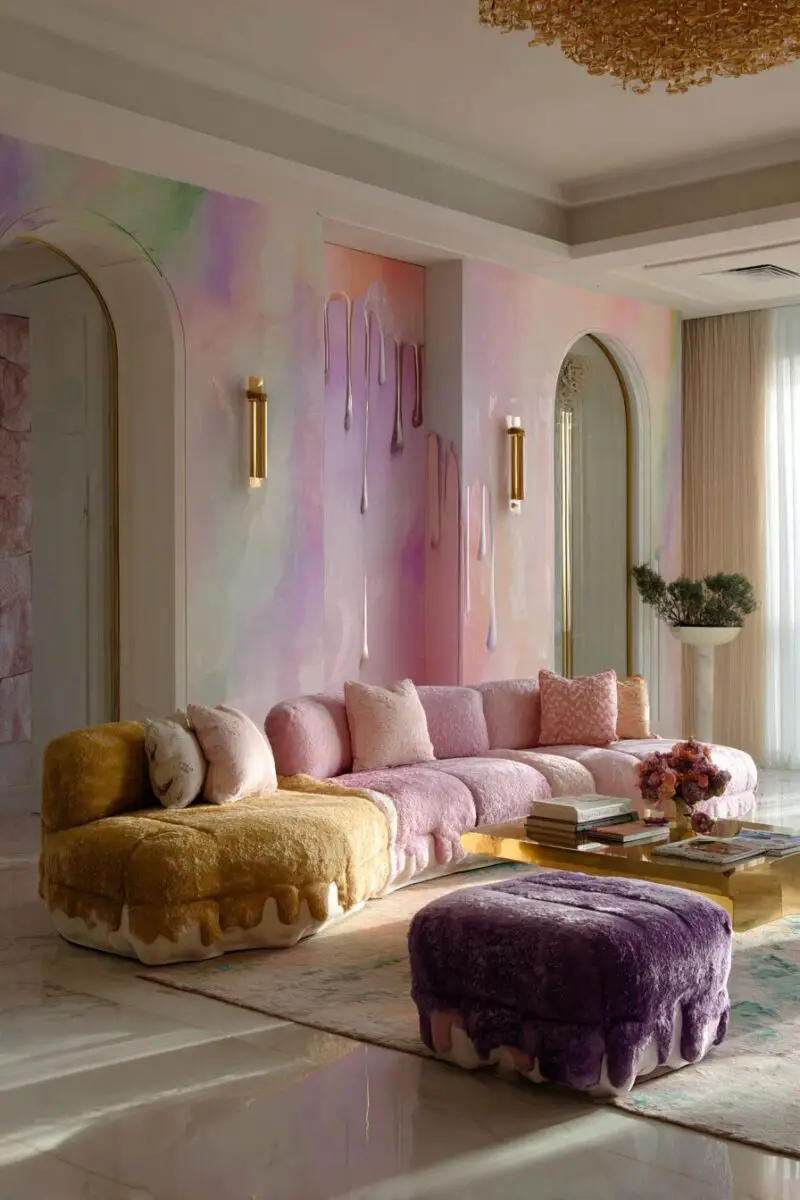
Remember Dalí’s famous melting clocks?
Now imagine that same fluid concept transforming your living space.
Furniture that appears to be melting, dripping, or oozing across your floor creates an immediate visual impact that guests won’t soon forget.
You can find designer pieces specifically created with this surrealist concept in mind—from bookshelves that seem to sag under invisible heat to chairs that appear to be melting right before your eyes.
The beauty of melting furniture lies in its ability to make something familiar suddenly feel strange and dreamlike.
Custom-made pieces might be your best bet for truly unique items, though mainstream retailers are increasingly offering surrealist-inspired designs.
These pieces work best as statement items—a single melting chair or table amid otherwise normal furnishings creates the perfect tension between reality and fantasy.
Materials like acrylic, resin, and certain types of polymer allow designers to create these flowing, liquid-like appearances while maintaining functional furniture.
You might consider starting small with a melting clock wall sculpture as a nod to Dalí before investing in larger furniture pieces.
The visual weight of these pieces tends to draw the eye downward, creating interesting spatial dynamics in your room.
For the bold decorator, consider a melting staircase or banister that seems to defy both gravity and logic.
This style pairs surprisingly well with minimalist surroundings—the clean lines of modernism provide the perfect backdrop for these disruptive forms.
Color choice matters significantly with melting furniture—vivid hues emphasize the surreal quality, while monochromatic schemes create a more subtle, dreamlike effect.
When shopping for these pieces, look for craftsmanship that ensures functionality hasn’t been sacrificed for form.
The juxtaposition of melting furniture against structural architectural elements creates a compelling visual dialogue about permanence and impermanence.
Impossible Architecture: Defy Physics Within Your Walls
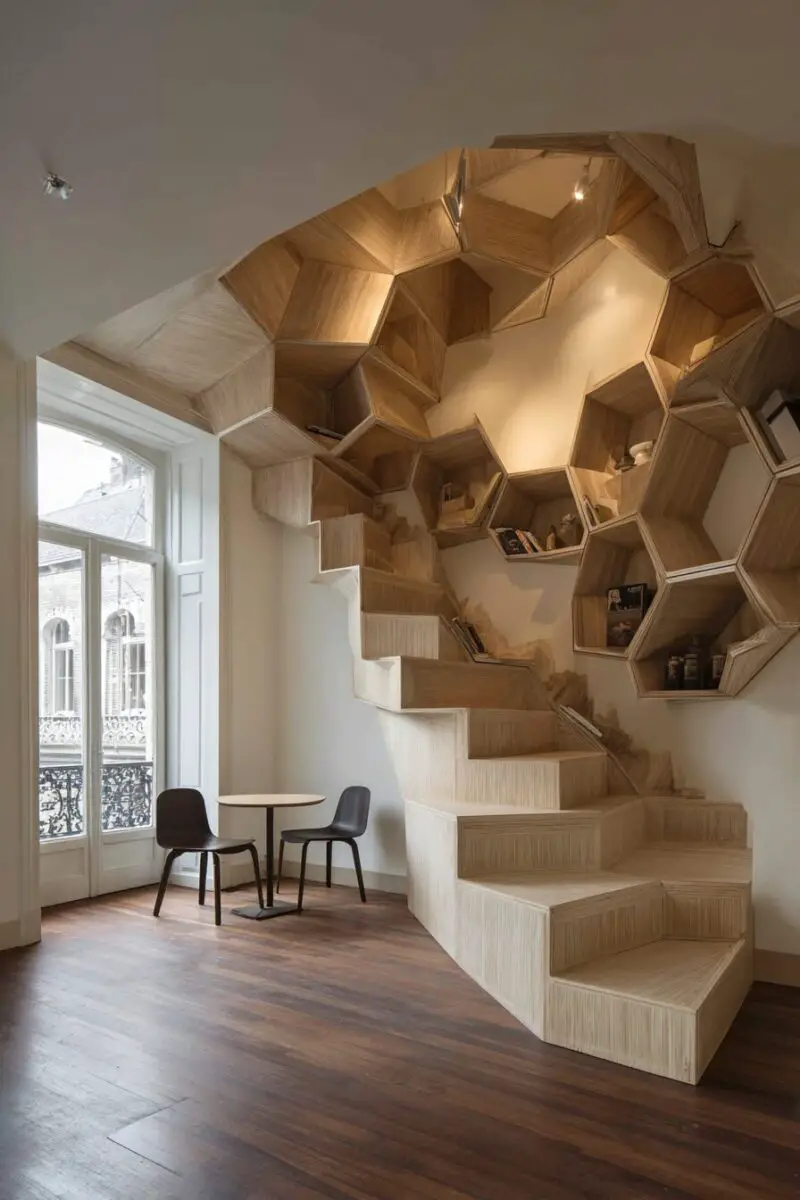
M.C.
Escher would feel right at home with this trend that brings impossible architectural elements into domestic spaces.
You can incorporate staircases that lead nowhere, doorways that open onto painted landscapes, or windows that offer views into entirely different “realities.”
This approach turns your home into an artistic statement about perception and reality.
Wall murals featuring impossible perspectives can transform an ordinary room into a mind-bending experience that challenges spatial awareness.
Install a false door that opens to reveal a painted continuation of your room—but with subtle differences that create a parallel universe effect.
Floating architectural elements—like partial staircases mounted to walls with no practical purpose—serve as both art installation and conversation piece.
Optical illusion flooring, with 3D designs that appear to create hills, holes, or impossible geometries, can transform walking through your home into an adventure.
Custom bookshelves designed with impossible angles and perspectives bring the surrealist touch to practical storage.
You might incorporate lighting that casts shadows inconsistent with the objects creating them—a simple lamp that somehow projects the shadow of a bird in flight, for instance.
Ceiling treatments that seem to extend infinitely upward create vertigo-inducing perspectives that make even small rooms feel limitless.
Mirrors strategically placed to create infinite regression effects or impossible reflections further enhance the sense of unreality.
Wallpaper with architectural motifs that defy logic—like doorways that would lead to impossible spaces—offers an easier entry point into this style.
For a bold statement, consider floor-to-ceiling trompe l’oeil murals that create entirely fictional spaces extending beyond your walls.
Half-height doors scaled for children but placed in adult spaces create an Alice in Wonderland disorientation that’s quintessentially surrealist.
Design Your Dream Room in Minutes!
🏡 Start Creating FREE →Living Objects: When The Inanimate Becomes Alive
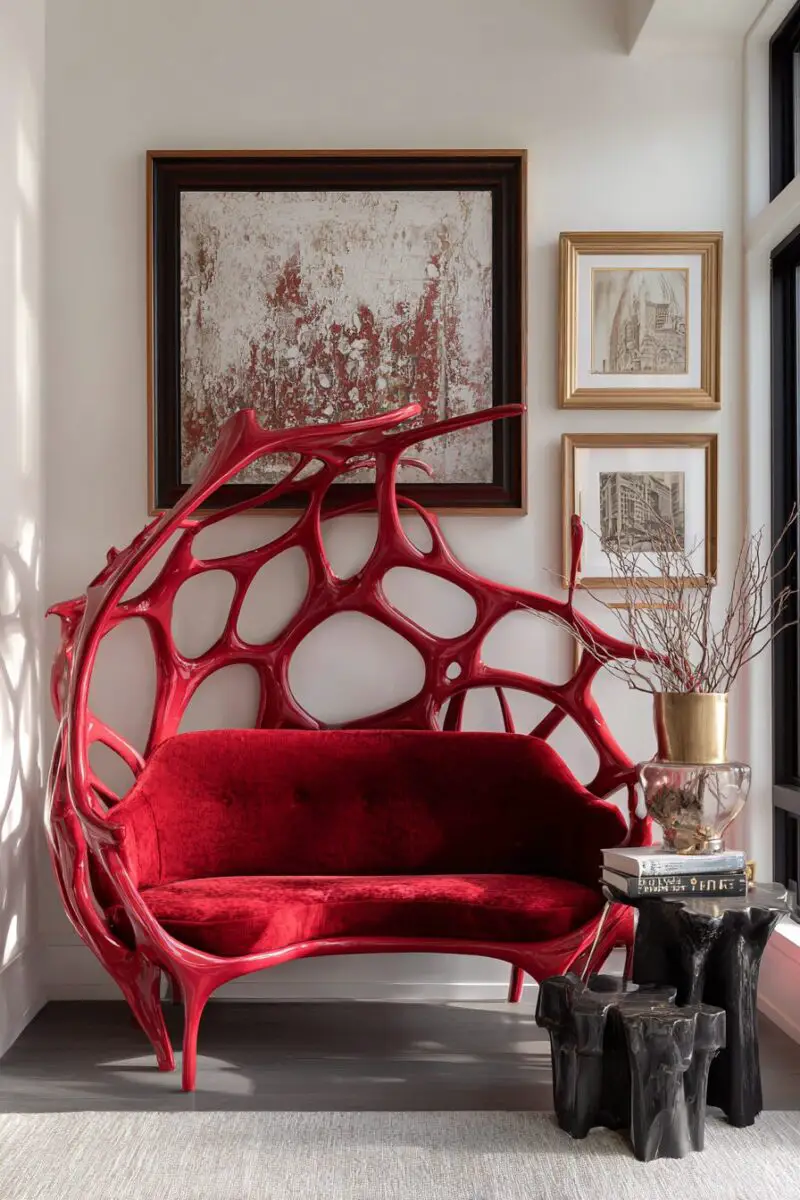
Imagine household items that appear sentient, watching, or somehow alive—this unsettling yet fascinating trend brings objects to life in your space.
You can find lamps with eyes that seem to follow movement, chairs with arms that actually look like arms, or tables with legs that appear to be walking.
This anthropomorphic approach to design creates an uncanny valley effect that’s both disturbing and delightful.
Cabinets with drawer pulls shaped like fingers or faces create subtle moments of surrealist intervention in otherwise conventional spaces.
Mirrors framed with sculptural elements that appear to be emerging from or sinking into the reflective surface blur the line between object and image.
You might display ordinary items that have been subtly modified—a clock where the numbers appear to be falling off, or books whose titles shift depending on viewing angle.
Rugs or floor coverings with footprint patterns that don’t match your own create the impression of invisible inhabitants sharing your space.
Light fixtures that resemble organic forms—blinking eyes, opening flowers, or breathing lungs—add movement and life to static environments.
The key to this trend is restraint—too many “living” objects create chaos, while carefully chosen pieces create intrigue.
Door handles shaped like gripping hands transform the simple act of entering a room into a handshake with your home.
You might commission custom picture frames that appear to be growing branches or sprouting leaves, bringing art displays into this living object concept.
Household appliances modified with expressive features—a toaster that appears surprised or a refrigerator with a face—inject playfulness into everyday items.
TRENDING NOW
13 Touches To Elevate Your Home With Boho StyleInverted Reality: Turning Expectations Upside Down
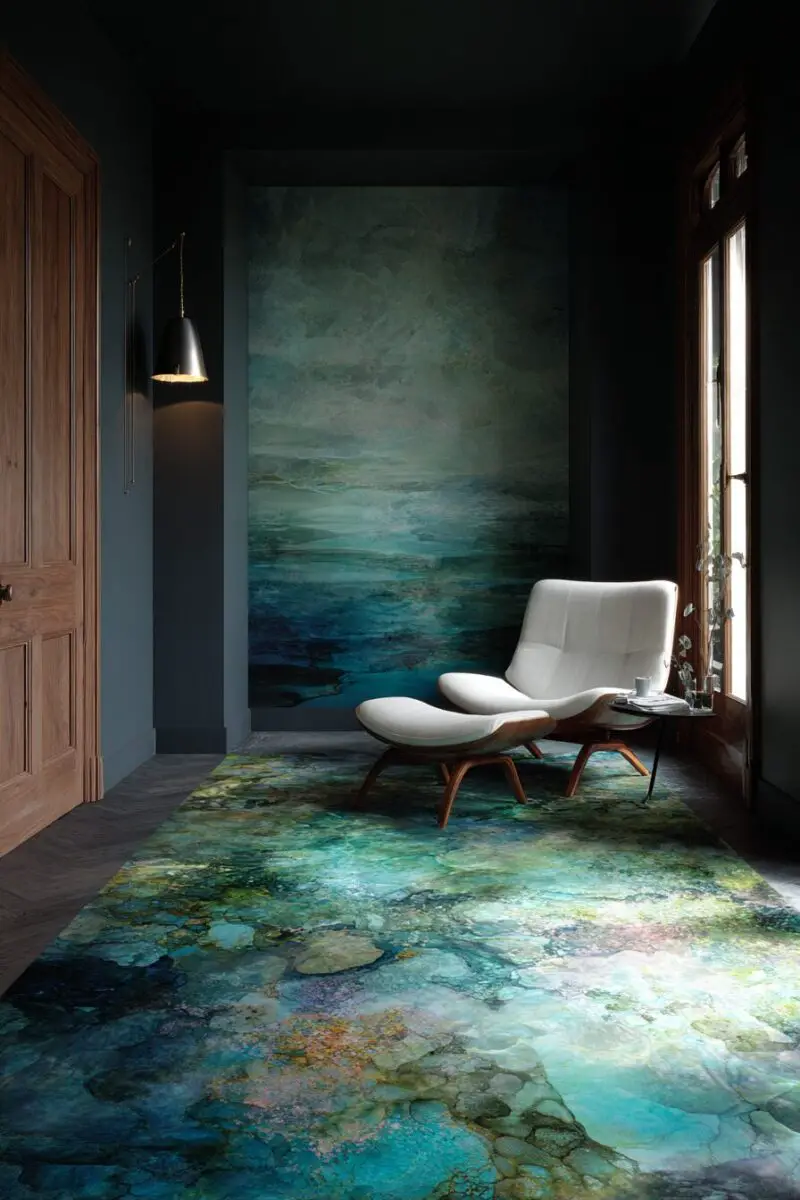
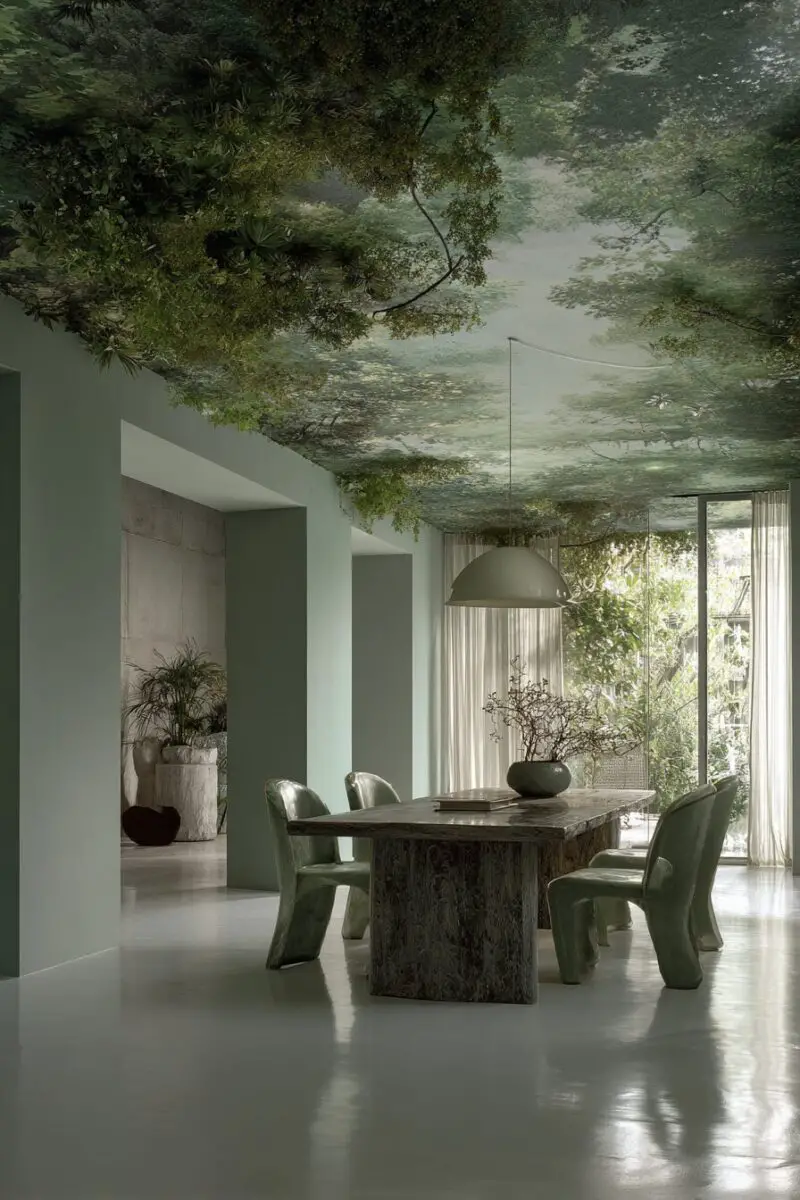
This trend literally flips convention on its head by mounting furniture on ceilings, hanging plants upside down, or creating inverted spatial relationships.
You can create a stunning effect with a “reflection room” where ceiling fixtures are mirrored on the floor, challenging notions of up and down.
Dining chairs mounted to the ceiling above a normal dining table create a striking visual that suggests an alternate reality existing alongside our own.
Bookshelves installed at unusual angles—particularly upside down or sideways—transform ordinary book collections into sculptural installations.
The beauty of this trend lies in its ability to make the familiar suddenly strange through simple recontextualization.
You might create a ceiling-mounted “living room” vignette directly above your actual seating area, complete with inverted furniture and accessories.
Plants growing downward from ceiling-mounted planters create living sculptural elements that defy gravitational expectations.
Put wall-mounted objects that appear to be sinking into or emerging from solid surfaces, blurring boundaries between dimensions.
Kitchen utensils displayed as though they’re falling through the ceiling create dynamic energy in utilitarian spaces.
For a subtle approach, consider artwork in frames that are installed upside down, creating a moment of cognitive dissonance for viewers.
Hanging furniture creates usable art that challenges conventional relationships between form and function.
You might explore the concept with textile elements like curtains that appear to flow upward instead of down, defying gravity in soft, flowing forms.
Lighting designed to cast shadows upward rather than downward subtly disrupts spatial perception without requiring major installations.
Dreamscape Bedrooms: Sleep in Your Subconscious
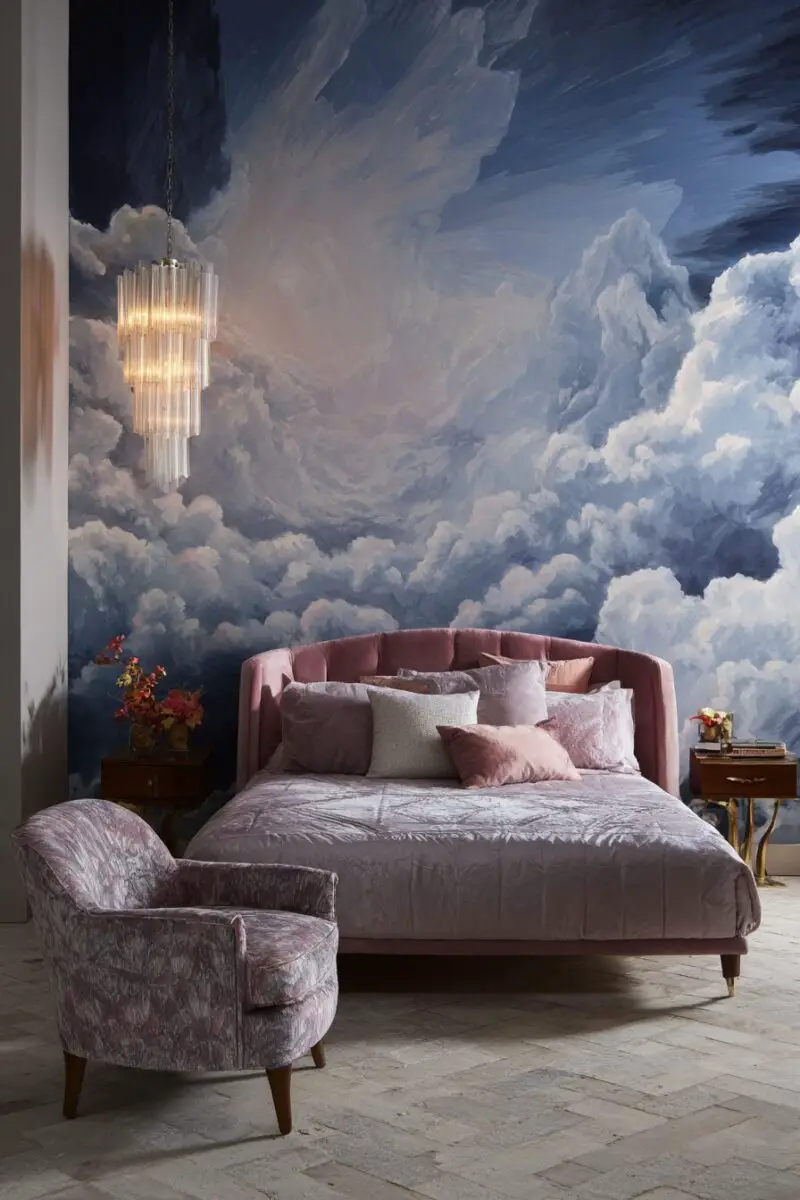
The bedroom, already associated with dreams, offers the perfect canvas for surrealist expressions of the subconscious mind.
You can transform this intimate space into a manifestation of dream logic with beds that appear to float, headboards that resemble cloudy skyscapes, or ceiling treatments that evoke night skies with unexpected elements.
Bedding with photorealistic prints of unlikely surfaces—like moss, water, or clouds—creates tactile confusion that echoes dream sensations.
Projection mapping onto bedroom walls can create shifting dreamscapes that transform as you drift to sleep, bringing dream logic into your waking environment.
You might incorporate sound elements that create auditory illusions—whispers that seem to come from nowhere or ambient sounds that subtly shift in unexpected ways.
Mirrors positioned to create infinite reflections or unexpected angles introduce the kind of spatial distortion common in dreams.
Incorporating scent diffusers with unusual fragrance combinations that trigger memory and emotion in ways typical room scents don’t.
Lighting that shifts imperceptibly throughout the night can create the sensation of time distortion associated with dream states.
Wardrobe doors designed to resemble portals to other worlds transform the mundane act of choosing clothes into a journey through the looking glass.
You might install floor materials that change appearance under different lighting conditions, creating environments that transform from day to night.
Ceiling-mounted objects that hang just at the periphery of vision create the sensation of something always just out of focus—a common dream experience.
Put furniture with hidden compartments that reveal surprising contents, echoing the unexpected discoveries that characterize dreams.
Textiles with temperature-responsive elements that change appearance with body heat create interactive surfaces that respond to your presence like a living dream.
TRENDING NOW
Elevating Your Home With 13 Elegant Color SchemesSurrealist Gardens: Nature Defying Nature
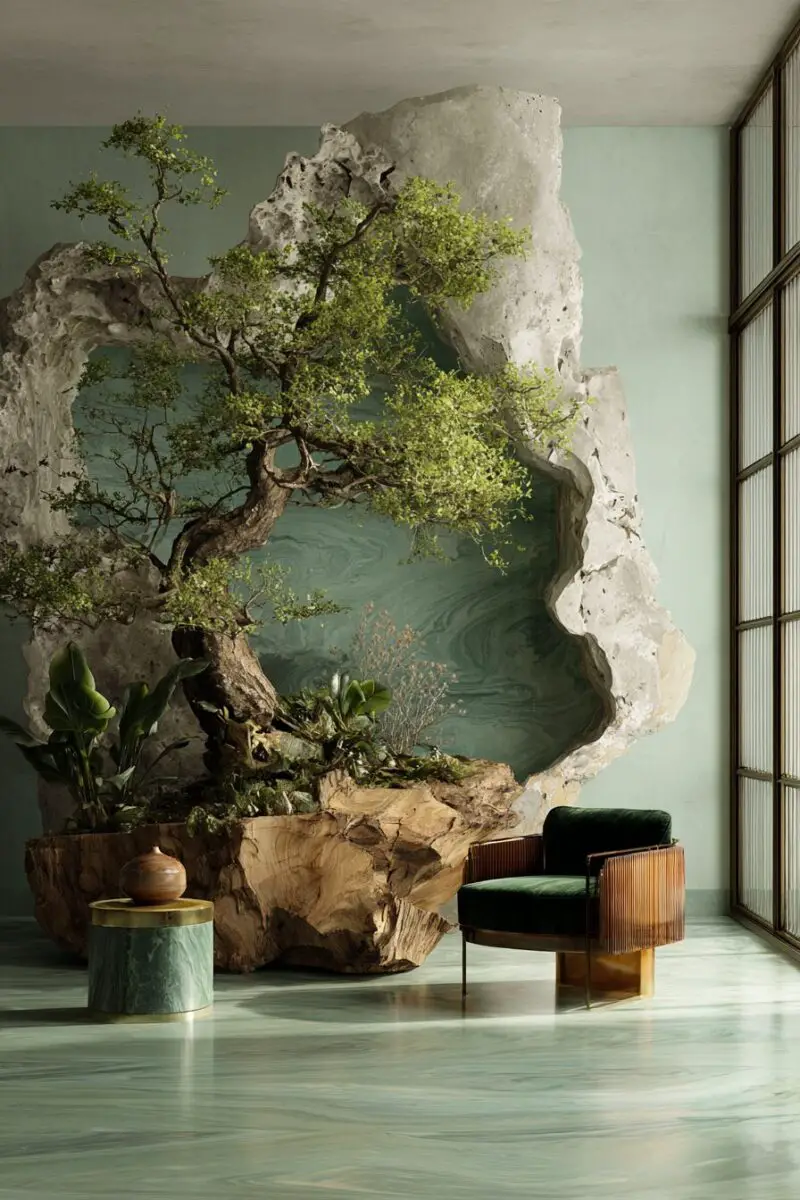
Outdoor spaces offer unique opportunities to implement surrealist concepts on a larger scale with natural elements.
You can create gardens where plants appear to grow in impossible directions, floating planters defy gravity, or topiary creates impossible animal hybrids.
Garden paths that create optical illusions of depth or distance transform simple walks into perceptual adventures.
You might install mirrors in outdoor spaces to create false horizons or duplicate sections of the garden that don’t actually exist.
Oversized or miniaturized garden elements—enormous flower sculptures amid tiny trees, for instance—play with scale in ways that disorient and delight.
Outdoor furniture that appears to sink into the ground or emerge from it blurs the boundary between the manufactured and the natural.
You might create shadow gardens where the plants cast shadows inconsistent with their actual forms, perhaps through carefully positioned light sources.
Garden sculptures that incorporate functional elements—a bench emerging from a giant hand, for example—combine art and utility in surrealist fashion.
Consider living walls where plants grow in patterns that create recognizable images or faces when viewed from the right angle.
Inverted planting schemes where ground covers grow overhead while trees appear to sprout from below create disorienting but fascinating garden spaces.
You might incorporate sound elements that seem mismatched with the visual environment—ocean waves in a desert garden or urban sounds in lush greenery.
Pathways that appear to lead into impossible spaces or that create forced perspective illusions transform garden navigation into an artistic experience.
TRENDING NOW
13 Stylish Rustic Home Decor Ideas For A Cozy SpaceDislocated Function: Objects Refusing Their Purpose
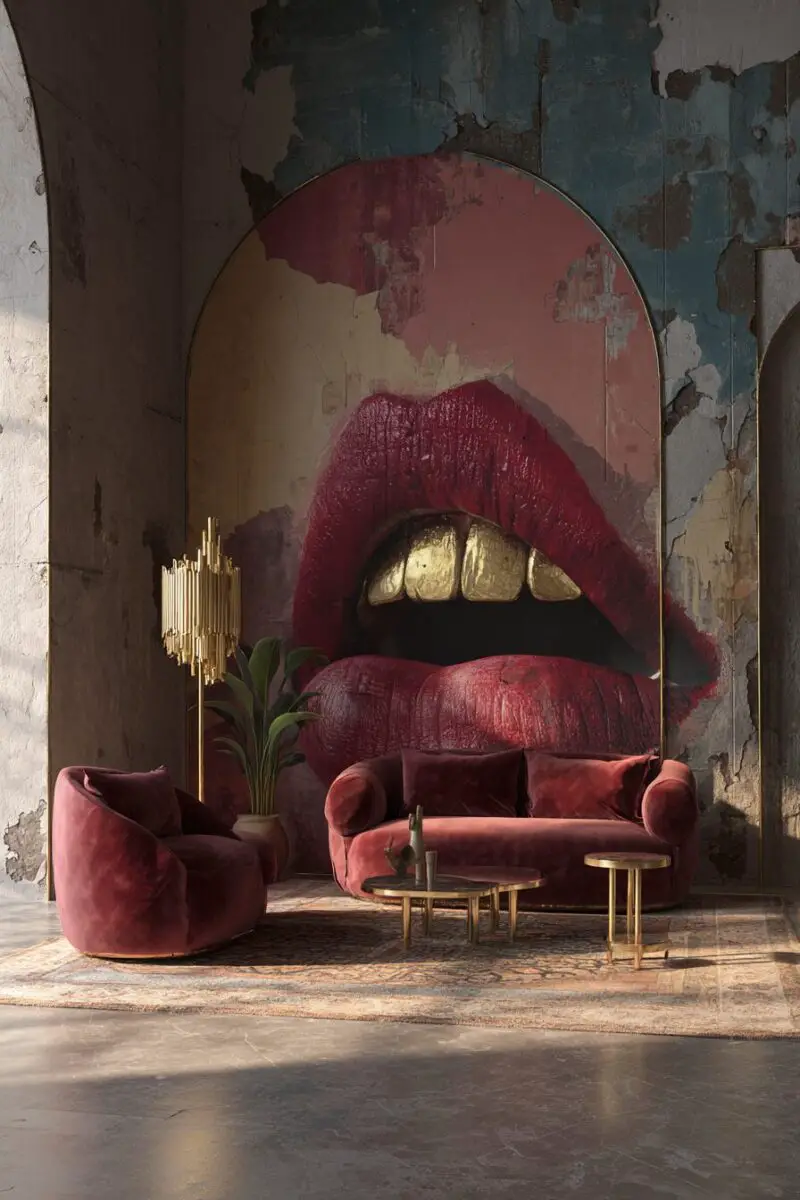
This trend celebrates the surrealist tradition of separating objects from their intended functions, creating delightful confusion.
You can display telephones that grow plants instead of making calls, bathtubs repurposed as sofas, or lamps made from unexpected materials that seem unsuited to lighting.
Put kitchen implements mounted as art rather than stored for use, celebrating their form while denying their function.
Doors installed in the middle of rooms rather than at entrances create portals that lead nowhere but make powerful sculptural statements.
You might convert functional items into their opposites—a sink designed to appear perpetually dry or a fireplace that holds ice sculptures.
Books hollowed out to serve as planters or storage challenge our expectations about these knowledge repositories.
Put with faces that move counterclockwise, hands that bend, or numbering systems that defy conventional time-telling.
Staircases repurposed as bookshelves or display spaces transform transitional architecture into functional sculpture.
You might install windows that don’t look outside but instead frame curated vignettes or art pieces, turning the concept of “view” inward.
Umbrellas mounted upside-down as light fixtures celebrate form while completely reinventing function.
Put dining tables with surface interruptions that make conventional dining impossible, transforming them into purely sculptural elements.
You might display musical instruments that have been rendered unplayable through artistic modification, celebrating their visual rather than auditory qualities.
Clothing items permanently mounted as decoration rather than stored for wearing transfer personal items into the realm of permanent display.
Household tools displayed as precious objects in custom frames or cases elevate utilitarian items to art status.
TRENDING NOW
13 Stylish Summer Decorating Ideas for Your SpaceDimensional Disruption: When 2D Becomes 3D
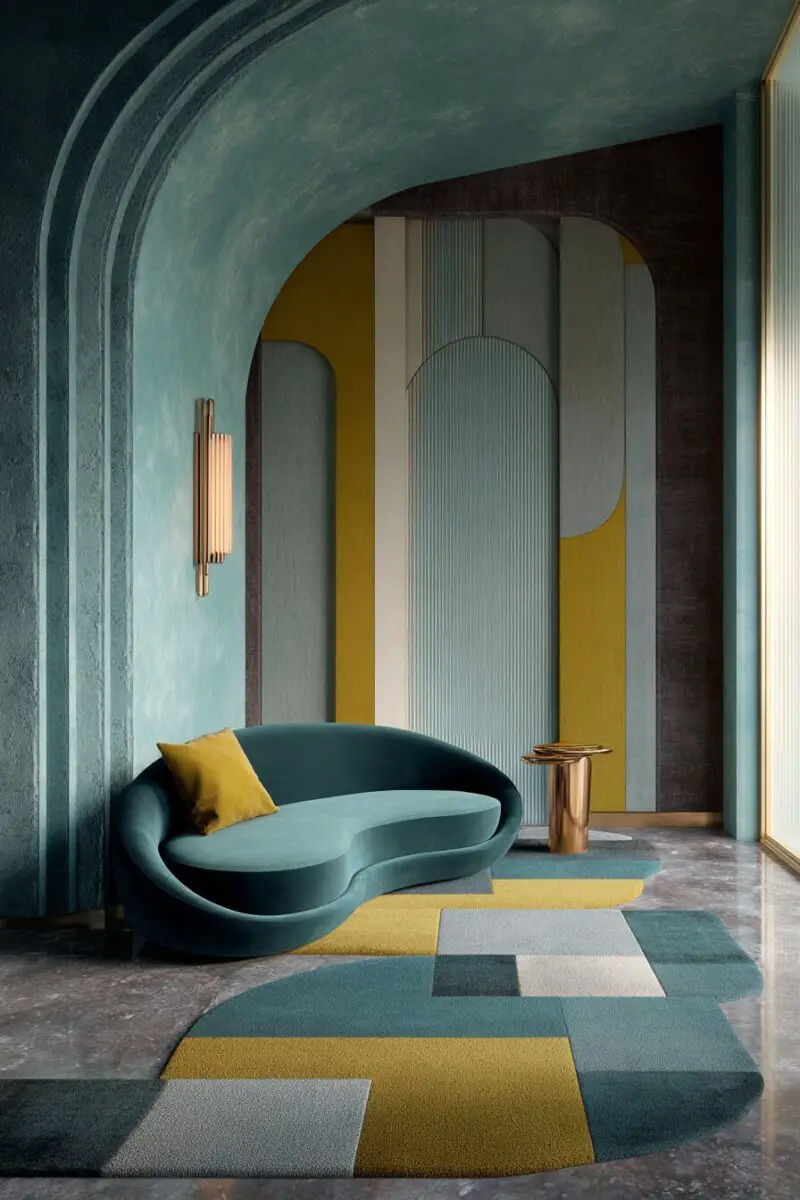
This trend plays with the boundary between flat imagery and three-dimensional space, creating moments where reality seems to fold or unfold.
You can incorporate wallpaper or murals where elements appear to peel away from the wall, reaching into the room as 3D extensions.
Rugs with designs that rise up into three-dimensional objects at their edges create the illusion of flat patterns taking physical form.
You might display artwork in frames that extend the image beyond their boundaries, with sculptural elements continuing the pictorial narrative into real space.
Floor treatments that appear to dip, rise, or create holes through optical illusions challenge perception without changing the actual walking surface.
Wall installations that begin as flat design elements but gradually project farther from the wall create transitional dimensional effects.
You might incorporate textiles that transition from printed patterns to actual textures, blending visual and tactile experiences.
Doorways outlined with perspective-challenging frames can make rectangular passages appear to be odd shapes when viewed from certain angles.
Mirrors with sections that transition into actual objects blur the line between reflection and reality.
You might display books or magazines that have sculptural elements emerging from their pages, as though the content is escaping its confines.
Light fixtures that project patterns inconsistent with their physical structure create dimensional illusions through shadow play.
Chronological Confusion: Time Loses Meaning
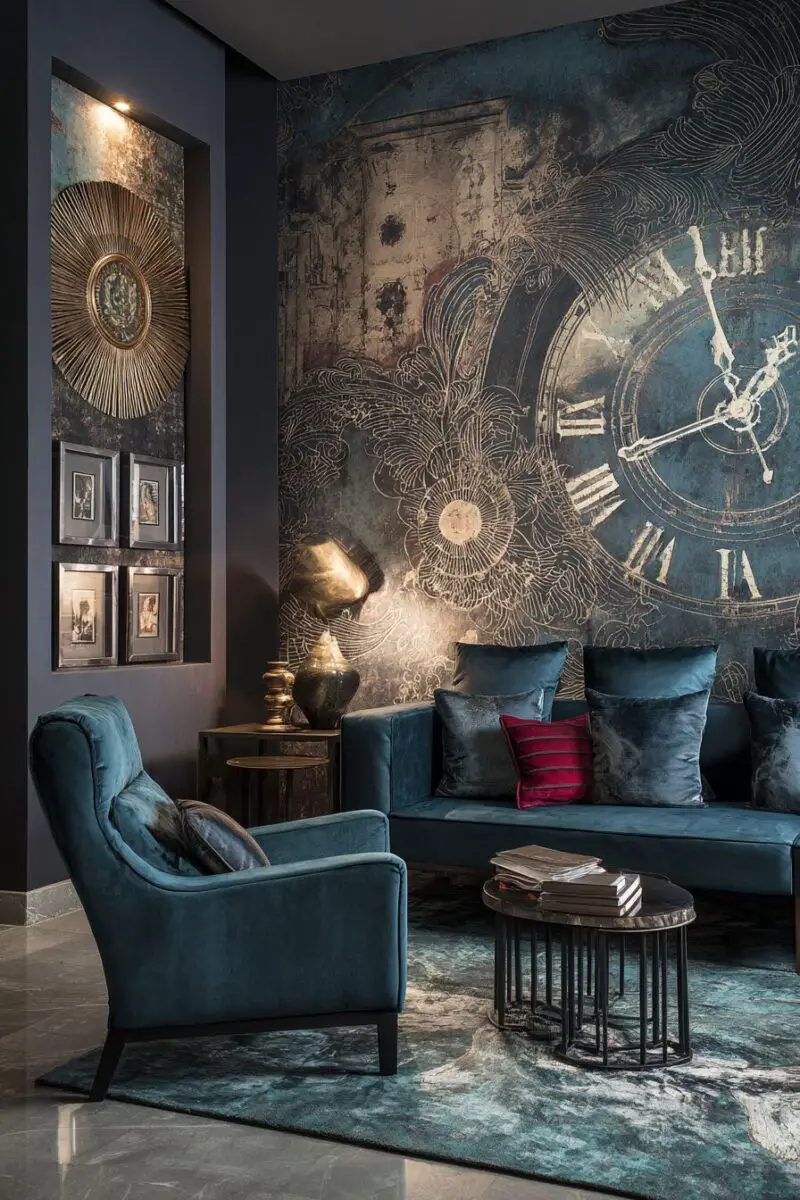
This trend embraces surrealism’s fascination with time, creating spaces where different eras collide or temporal expectations are subverted.
You can create rooms where each wall represents a different historical period, with furnishings and decorative elements to match.
Display of antique timepieces that have been modified to move at different speeds, run backward, or display impossible times.
Furniture pieces that combine elements from vastly different eras—Victorian legs supporting minimalist tabletops, for instance—create temporal collages.
You might incorporate wallpaper or textiles that feature anachronistic imagery, like Renaissance figures using modern technology.
Digital photo frames programmed to age images in real-time or show the same space during different seasons create windows into alternate timelines.
Lighting that automatically shifts to recreate different historical lighting conditions throughout the day connects your space to the past.
You might display collections of similar objects from different time periods, arranged to show evolution or devolution of design.
Calendars or scheduling objects modified to suggest alternative systems of timekeeping challenge conventional temporal organization.
You might create spaces where technology from different eras coexists functionally—a rotary phone alongside smart speakers, for instance.
Decorative elements that reference future design aesthetics alongside vintage pieces create tension between past and potential futures.
Photo or art displays that show the same location or person across different time periods create visual timelines within your space.
TRENDING NOW
13 Creative Locker Ideas to Elevate Your SpaceSubconscious Color: Palettes From Dream Psychology
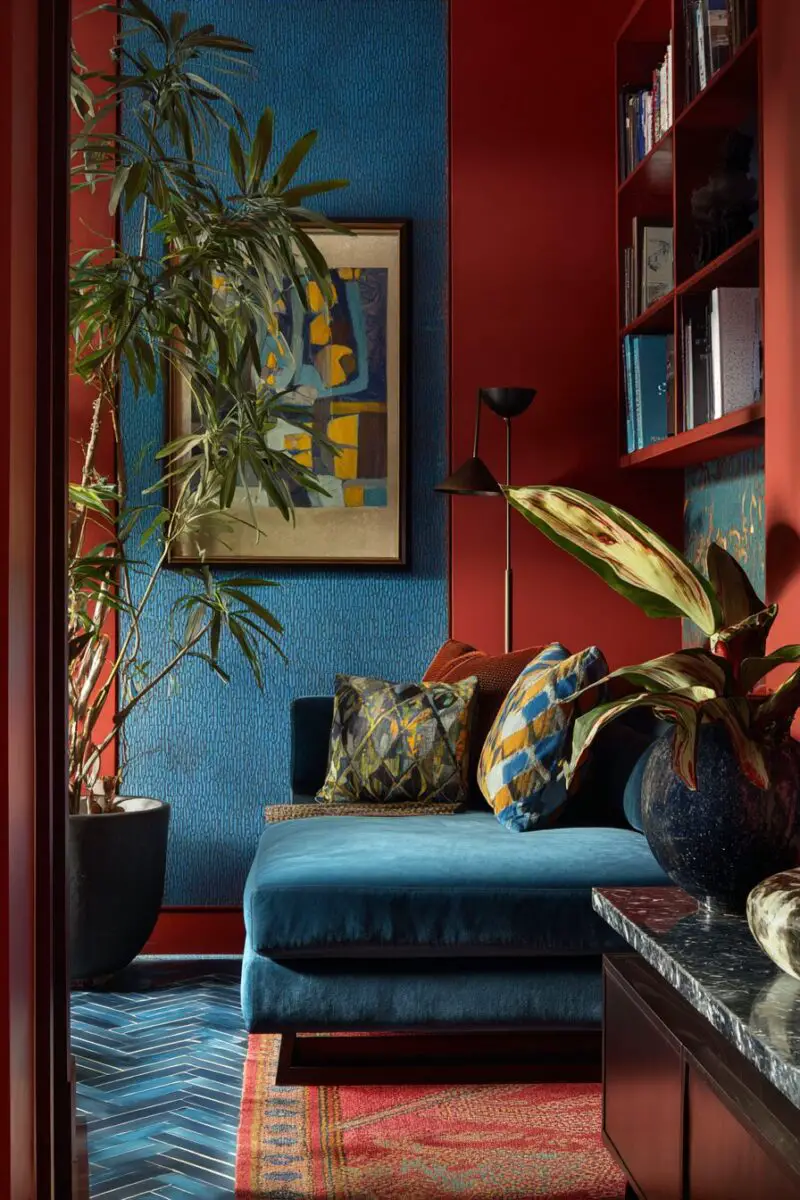
This final trend harnesses color psychology to create emotional environments that feel drawn from dream states or the subconscious mind.
You can employ color transitions that defy logical progression, shifting between hues that wouldn’t naturally occur together in nature.
Color schemes derived from dream research—like the prevalent blues and purples of lucid dreaming states—connect your space to subconscious experience.
You might incorporate lighting that subtly shifts wall colors throughout the day without drawing conscious attention to the change.
Unexpected color pairings that create visual vibration or afterimage effects engage the viewer’s perception in actively creating the experience.
Gradient walls that shift so subtly between colors that the transition points can’t be identified create visually challenging environments.
You might use color to contradict form—painting objects to visually flatten them or adding shadows and highlights that don’t match actual light sources.
Consider finishes that change color depending on viewing angle, temperature, or lighting conditions, making the environment dynamically responsive.
High-contrast unexpected color blocking can make architectural features appear to advance or recede in impossible ways.
You might employ fluorescent or UV-reactive elements that reveal hidden designs or messages under certain lighting conditions.
Incorporating thermochromic elements that change color with touch, connecting physical interaction with visual transformation.
Color schemes deliberately designed to evoke specific emotional states—using research from color psychology—can transform the feeling of spaces without changing their physical properties.
Surrealism isn’t just an artistic movement—it’s a mindset that celebrates the unexpected, the dreamlike, and the imaginative aspects of human consciousness.
By incorporating these top approaches to surrealist decor, you can transform your living space from a mere shelter into a personal dreamscape that challenges perceptions and sparks conversation.

